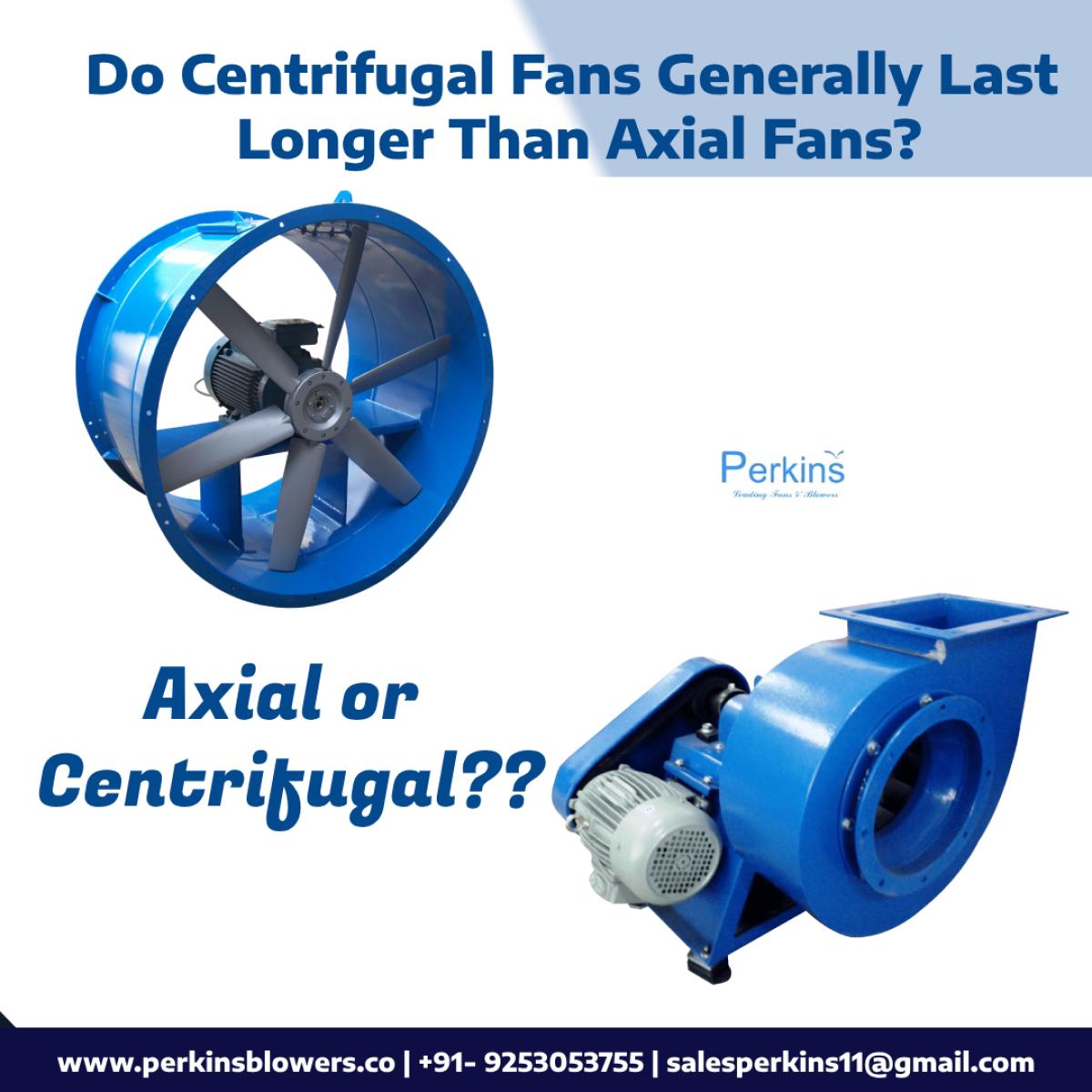
When it comes to industrial ventilation, cooling, and air movement systems, the longevity of a fan plays a critical role in overall operational efficiency and maintenance costs. Whether in HVAC systems, manufacturing plants, or dust collection setups, the debate between centrifugal fans and axial fans often centers not only around performance and airflow direction but also around which type lasts longer.
Let’s explore the key differences between these two types of fans, how their designs affect durability, and why centrifugal fans are generally considered to have a longer service life — especially when engineered by trusted names like Perkins Blowers, a leading manufacturer in industrial air movement technology.
Fan Basics: Centrifugal vs. Axial
To understand why one type may last longer than the other, it's essential to first understand how each fan operates.
-
Axial Fans move air parallel to the fan shaft. These fans are typically used where a high volume of airflow is needed with relatively low pressure. You’ll find axial fans in applications such as cooling towers, electronic equipment, and general ventilation.
-
Centrifugal Fans (also known as blowers) move air perpendicularly from the intake to the outlet, creating higher pressures. These are suited for applications that require air to be moved through ducting or against resistance, like HVAC systems, dust collectors, and cleanrooms.
While both serve important purposes, design differences play a major role in their longevity.
Why Centrifugal Fans Typically Last Longer
Here are the major factors contributing to the longer lifespan of centrifugal fans:
1. Rugged Construction
Centrifugal fans generally have heavier-duty components. Their blades are often backward-curved or radial and mounted within a strong housing. This design helps them withstand higher static pressure, resist corrosion, and handle debris better than axial fans.
At Perkins Blowers, centrifugal fans are designed with reinforced materials and coatings, making them more resilient in harsh industrial conditions, including dust-heavy and corrosive environments.
2. Lower Operating Speeds
Compared to axial fans, centrifugal fans usually operate at lower rotational speeds. This reduces mechanical wear and tear on moving parts like bearings and shafts. Slower operation also results in less vibration, which is a major contributor to fan fatigue and premature failure.
The quieter, smoother operation also means less stress on the entire system, leading to better long-term performance.
3. Efficient Cooling Under Load
Axial fans tend to struggle when static pressure increases, as their design is optimized for high-volume, low-pressure airflow. When forced to work under load, they overheat and degrade faster.
Centrifugal fans, on the other hand, thrive under pressure. Their design allows them to maintain performance even as resistance increases, making them more suited for applications involving filtration, ducting, or confined spaces. This resilience directly contributes to their extended service life.
Maintenance & Reliability
1. Axial Fans Need More Frequent Servicing
Due to their high-speed operation and open-frame design, axial fans tend to accumulate dust and debris on the blades faster. This buildup causes imbalance and reduces efficiency. Regular cleaning and rebalancing are necessary to avoid overheating and wear.
2. Centrifugal Fans Are Easier to Maintain
Centrifugal fans, especially those from established manufacturers like Perkins Blowers, are engineered with accessibility in mind. Their enclosed housings reduce contamination, and their bearings and motors are often positioned outside the airflow stream, reducing exposure to dirt and chemicals.
Application Matters
It’s important to note that while centrifugal fans may last longer, the right fan depends on the application.
-
For short-term use, low-cost setups, or where space constraints are critical, axial fans might still be the best choice.
-
For long-term durability, especially in dusty, pressurized, or industrial environments, centrifugal fans are the more cost-effective option over time.
At Perkins Blowers, both axial and centrifugal fans are custom-designed for durability, but the robust engineering behind centrifugal models gives them a distinct edge in life expectancy.
Conclusion: Long-Term Value Favors Centrifugal Fans
While axial fans certainly have their place in industrial and commercial environments, the engineering, design, and material strength of centrifugal fans offer a significant advantage in longevity.
By resisting wear, handling pressure more effectively, and requiring less frequent maintenance, centrifugal fans provide better value over time, especially when sourced from manufacturers who prioritize quality and innovation — like Perkins Blowers.
If you're looking for a fan that not only performs efficiently but also lasts longer, centrifugal fans are the smarter investment.
Read more : How to Select the Perfect Centrifugal Air Blower for Your Industrial Needs
